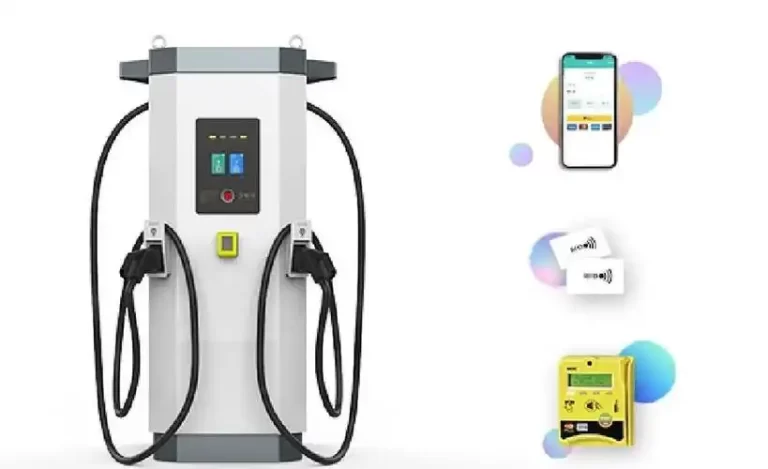Best battery charger for car

Best battery charger for car. The “best” car battery charger isn’t a single model; rather, it’s a gadget that skillfully strikes a balance between smart charging technology, strong safety features, broad compatibility, and high reliability to preserve the health of your car’s battery and guarantee that it’s always ready to start.
The growing popularity of electric vehicles (EVs) and the ongoing requirement to maintain conventional internal combustion engine (ICE) vehicle batteries are the main drivers of the thriving and diverse global market for car battery chargers. The search results that are provided provide useful information about particular products that will be on the market in 2024–2025, but this analysis will go deeper into the fundamental ideas, technical factors, and general patterns that determine what constitutes the “best” battery charger for a person’s needs.
Understanding Your Battery: The Foundation of Choice
You cannot choose the best charger without first understanding the heart of your vehicle’s electrical system: the battery itself. Using an incompatible charger can, at best, be inefficient and, at worst, permanently damage your battery.
- Lead-Acid Batteries (Flooded, AGM, Gel): These are the traditional types found in most ICE vehicles. Flooded (or wet) batteries require occasional maintenance (topping up with distilled water) and must be charged in well-ventilated areas due to vented gases. Absorbent Glass Mat (AGM) batteries, common in modern cars with start-stop systems, are sealed, spill-proof, and handle higher charge/discharge rates more efficiently. They require a specific charging profile to avoid damage. Gel batteries use a silica gel electrolyte and also require a specific voltage-limited charging profile.
- Lithium-Ion (Li-ion) Batteries: These are the standard for electric vehicles (EVs) and some high-performance applications. They are much lighter, have a higher energy density, and can charge and discharge at significantly higher rates. Crucially, they require a dedicated charger with a very specific and precise charging algorithm (CC-CV – Constant Current/Constant Voltage). Using a lead-acid charger on a lithium battery is extremely dangerous and poses a severe fire risk.
Compatibility is Key: The single most important step is to match your charger to your battery type. Many modern “smart” chargers can automatically detect battery type (6V/12V, Lead-Acid/AGM) and adjust accordingly, which is a significant safety and convenience feature.
Critical Features of a High-Quality Battery Charger
Beyond compatibility, the best chargers incorporate a suite of features designed for safety, efficiency, and convenience.
- Smart Charging & Microprocessor Control: This is the hallmark of a modern, high-quality charger. Instead of providing a constant, unregulated trickle of power, smart chargers use microprocessors to manage a multi-stage charging process. A typical sequence includes:
- Diagnosis: Checking if the battery can accept a charge.
- Bulk Charge: Delivering a high current to quickly restore most (~80%) of the battery’s capacity.
- Absorption Charge: Tapering the current while holding a constant voltage to safely top off the charge.
- Float Mode: Maintaining the battery at 100% charge without overcharging by switching to a very low, maintenance voltage.
- Pulse Maintenance: Some advanced models (like the Noco Genius series or Ctek models mentioned in searches) include a pulse mode that helps desulfate batteries, potentially reversing some capacity loss caused by sulfation.
- Comprehensive Safety Protections: Safety is non-negotiable. Look for these essential protections:
- Spark Proofing: The charger should not spark upon connection.
- Reverse Polarity Protection: Prevents damage if the positive and negative clamps are accidentally connected to the wrong terminals.
- Over-Current Protection: Guards against excessive current flow.
- Over-Voltage Protection: Prevents applying too high a voltage.
- Over-Temperature Protection: Shuts down or reduces power if the charger or battery gets too hot.
- Ease of Use & Feedback:
- Clear Indicators: LED indicator lights or, even better, a digital LCD display that shows voltage, charge percentage, and current, are invaluable for understanding the status of both the charge and the battery’s health.
- Fully Automatic Operation: The ideal charger is “connect and forget,” handling all stages automatically and shutting off when complete.
- Build Quality and Durability: Quality matters. Look for robust construction, thick, well-insulated cables, and strong, corrosion-resistant clamps that bite securely onto battery terminals.
Charger Types and Their Primary Uses
Your specific use case will heavily influence the best type of charger for you.
- Trickle Chargers / Battery Maintainers: These are designed for long-term maintenance, not for charging a dead battery. They deliver a very low current (often between 0.75A – 2A) perfect for keeping a battery at optimal charge during seasonal storage (e.g., winter for a motorcycle, summer for a classic car) without the risk of overcharging. They are essential for vehicle longevity.
- Standard Automatic Chargers: These are general-purpose smart chargers, often in the 4A – 10A range, suitable for periodically charging a battery that has been drained. They are a good all-around solution for home garages.
- High-Amp Chargers / Engine Starters: These units (some capable of 50A or more) are designed to provide a massive jolt of power to help jump-start a vehicle with a completely dead battery quickly. Many modern portable jump starters (like those from Baseus (倍思), Xiaonengren (小能人), and others detailed in the search results) integrate this function into a compact, lithium-powered package that also often includes USB ports for charging devices and LED lights. They are an emergency tool, not for regular battery maintenance.
- Multi-Function Units: A growing trend is the integration of multiple features. Many models now combine a battery charger/maintainer with a portable air compressor (like the 京东京造 [JD.com] model), making them incredibly versatile for roadside emergencies and general vehicle upkeep.
Overview of Recommended Brands and Models (Based on 2024-2025 Market Analysis)
| Brand & Model | Key Features | Ideal Use Case |
|---|---|---|
| Noco Genius Series (e.g., G3500) | Advanced smart charging, repair modes, safety features. | Enthusiasts seeking top-tier battery maintenance and repair. |
| Ctek MXS Series | Proven 8-stage charging, excellent build quality. | Reliable maintenance for standard and AGM batteries. |
| Baseus (倍思) Car Jump Starter | Compact, high peak current, multi-function (USB, light). | Emergency jump-starting and portable power on the go. |
| Xiaonengren (小能人) Multi-Function | Often combines charging with air compressor, jump start. | The practical driver who wants an all-in-one emergency kit. |
| 纽曼 (Newsmy) C90 Pro | Smart recognition, pulse repair, clear display. | A strong value-oriented smart charger for home use. |
Table: A brief comparison of charger types and representative models.
How to Choose the Right Charger for You: A Practical Guide
Ask yourself these questions to narrow down your choice:
- What is my primary goal? (Emergency jump-starts, seasonal storage, or regular maintenance?)
- What type and size of battery do I have? (Check your owner’s manual for the type and Ah rating.)
- What is my budget?
- What additional features would be useful? (Air compressor, USB ports, a bright flashlight?)
Practical Scenario: If you own a modern car with an AGM battery and plan to store it for the winter, your best investment is a smart trickle charger/maintainer (like a Noco Genius or Ctek) specifically rated for AGM batteries. This will keep your battery healthy and avoid the need for a jump-start come spring.
If you frequently face cold weather that strains your battery or want peace of mind for emergencies, a compact lithium jump starter (like a Baseus or Xiaonengren) is an excellent addition to your trunk, alongside a proper maintainer for home use.
Future Trends: The Evolving Landscape of Battery Charging
The field of battery charging is not static. Key trends are shaping the future:
- Integration with Renewable Energy: Chargers that can integrate with solar panels are becoming more popular, especially for maintaining batteries in RVs, boats, or off-grid storage systems.
- Enhanced Connectivity: Some high-end chargers are beginning to offer Bluetooth connectivity, allowing users to monitor and control the charging process from their smartphones.
- Focus on Sustainability: As battery technology evolves, so will charging techniques aimed at maximizing battery lifespan, thereby reducing waste and the environmental footprint.
Conclusion: Investing in Longevity and Reliability
The “best” car battery charger is ultimately the one that most precisely meets the needs of your specific battery and your usage patterns. It is an investment in the reliability of your vehicle and the longevity of an expensive component. By prioritizing safety features, smart charging technology, and build quality, you can confidently select a device that will provide years of dependable service, ensuring you’re never left stranded by a dead battery. Whether your choice is a dedicated maintainer for garage use or a multi-function powerhouse for on-the-go emergencies, making an informed decision will pay dividends in convenience and peace of mind for years to come.




































































































































